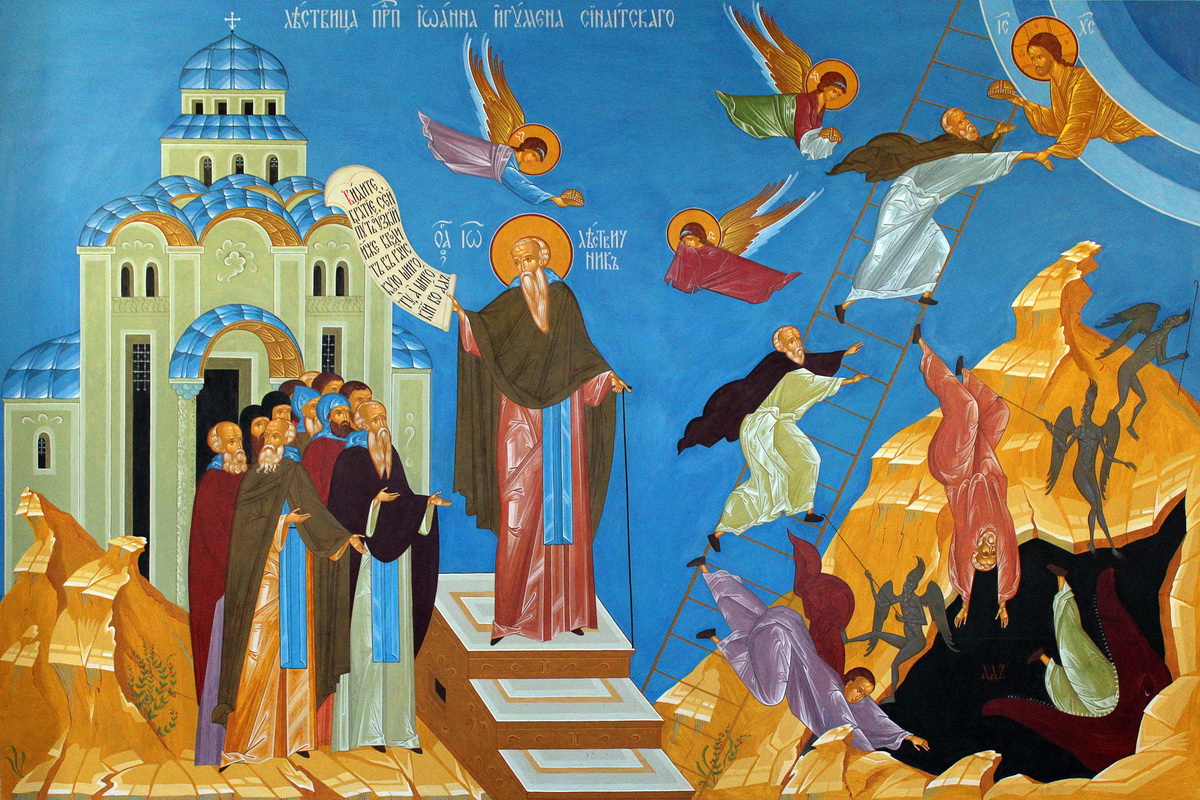
In the flow of days of our lives, an increasing number of people begin to understand all the bustle and the external character of the surrounding pursuit of money and fame, and therefore strive to develop spiritually. To do this, they go deep into the knowledge of the art of yoga, study the Taoist practices, some even go to India or Tibet. Unfortunately, very few people now know that the ancient tradition of spiritual perfection and asceticism exists in the Orthodox Church. Moreover, there is a detailed guide, which describes all the stages of a person's inner growth.
This manual, - Lestvitsa (Ladder) work of the VI century, consisting of 30 chapters. He, at the request of the abbot of one of the monasteries of the Sinai desert, wrote a great saint - St. John of the Ladder, who lived in monastic seclusion near Sinaia from 17 to 80 years. Summarizing his personal experience, as well as the long-standing tradition of monastic hermits, he described in great detail the successive process of approaching man to holiness. Therefore, it is no coincidence that this Sunday, almost in the middle of Lent, the Church honors his memory.
Why did John apply the image of a ladder in his work? It was based on the phenomenon of the heavenly ladder described in the Bible to Jacob - one of the patriarchs of the Old Testament, taking this plot as a symbol of spiritual ascent to God. The content of the book gradually reveals the whole practice and peculiarities of perfection in Christ.
At the beginning, the author suggests to abandon the world and its attachments, not to attach importance to the vain everyday life. This position leads a person to obedience, one of the main Christian virtues. When there comes a renunciation of the unnecessary, the process of repentance of the soul begins, not just repentance, but a radical change in the mode of life. This is not easy, because most of the spiritual councils of St. John gives in the next section, which deals with how to deal with the vices that most often live in our souls - laziness, discouragement, gluttony, fornication, anger and greed. If these passions have already been defeated, then other steps are being opened before the ladder of perfection, which must be passed. These are ascetic obstacles, the most dangerous of which is pride. Pride became the cause of the fall, and therefore is not in vain called the mother of all sins. But after the victory over pride, a person feels a spiritual peace and a desire for constant prayer to God, which makes him almost impassive. Holiness is the last step, which is the union of the three main virtues - faith, hope and love.
Critics of this ascetic practice object that such advice was written for monks, and therefore for ordinary lay people have no value. However, do not forget that all people have the same nature and the opportunity to improve, because the Church in Great Liturgy suggests to follow the spiritual ladder for all of us. Fasting is a time of repentance and contrition in sins, useful for both a monk and a neophyte. This is the best period to begin to change in the direction of good and light in the contrition of sins. This is also written by John Climacus himself: We will not be accused, brothers, we will not be blamed for the outcome of our souls, for not doing miracles, that they did not do theology, that they did not reach the vision, but without doubt we will give God the answer, That they did not weep continually about their sins.




